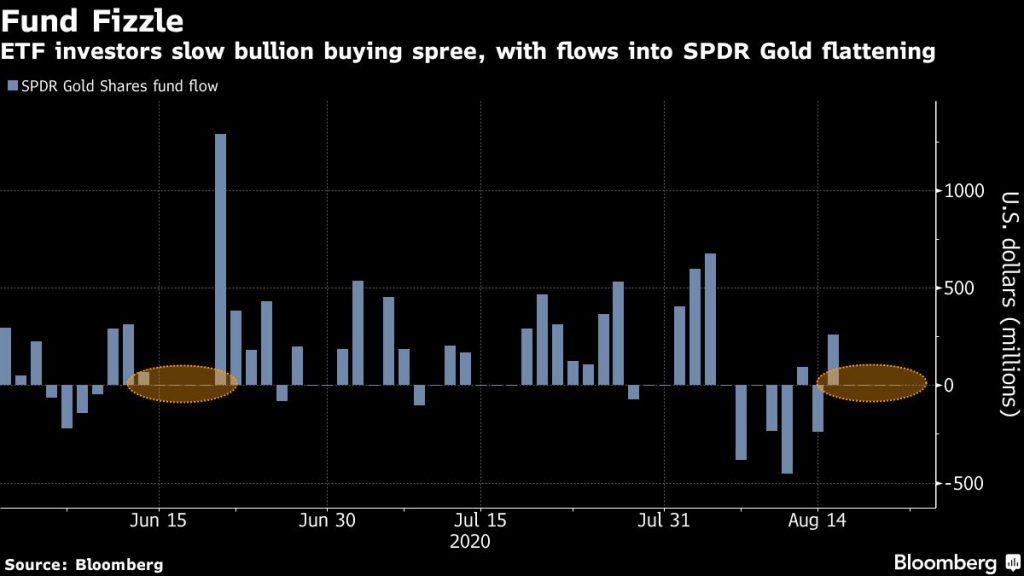
The rally in gold, which surged to a record high nearly two weeks ago, is beginning to lose steam with hopes for a coronavirus treatment and signs of improving economies undercutting the metal’s appeal as a haven.
Spot gold fell 0.6% to $1,916.61 per ounce by 11:50 a.m. EDT, while gold futures for December delivery declined 0.9% to $1,921.80 per ounce on the Comex in New York.

At Friday’s market close, bullion posted back-to-back weekly losses for the first time since June, and is now headed for its fourth decline in five sessions.
Despite the slump, gold is still up by 26% since the beginning of the year.
Positive signals on the US-China trade front, as well as renewed hopes about the production of covid-19 vaccines, have buoyed risk sentiment and offset support for the metal.
A stronger equity market is attracting more investors and erasing all the positive effects of a weaker dollar on gold, Commerzbank analyst Eugen Weinberg told Reuters.
“Gold is continuing to consolidate following its rapid rise until the start of August”
Carsten Fritsch, Commerzbank analyst
Investors are now looking forward to see if the US Federal Reserve “will tolerate inflation and put economic growth over monetary (growth),” Weinberg added.
Federal Reserve chairman Jerome Powell is due to speak at a gathering of central bankers in Jackson Hole, Wyoming, this Thursday, where he is expected to provide further clarity on the central bank’s efforts to revamp its approach to monetary policy.
“Gold is continuing to consolidate following its rapid rise until the start of August,” Carsten Fritsch, another Commerzbank analyst, said in a note Monday.
“This can also be seen in the wait-and-see attitude of ETF investors. The gold price is likely to find it hard to make further gains without any impetus in the form of ETF demand.”
Gains in holdings of gold exchange-traded funds — a key driver of the precious metal’s surge this year — have also slowed over the past few days. Inflows into SPDR Gold Shares, the top ETF backed by the metal, have been flat for five straight sessions, the longest run in two months.
(With files from Bloomberg and Reuters)